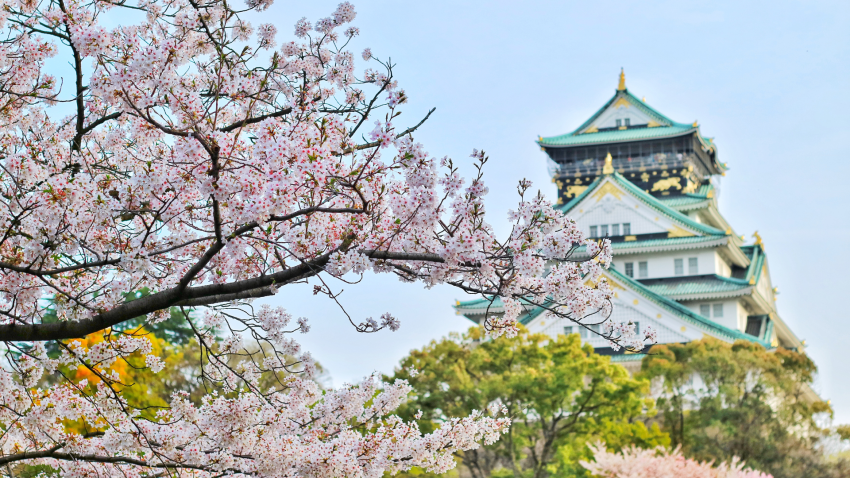Japan offers a diverse range of experiences that cater to all types of travelers. From the bustling streets of Tokyo to the serene temples in Kyoto, visitors can discover the recent innovations and ancient traditions that define this unique country. Exploring Japan’s landmarks, cultural heritage, and culinary delights forms an essential bucket list for any traveler.
Travelers can immerse themselves in vibrant city life, dine on exquisite sushi, and witness breathtaking natural landscapes, such as Mount Fuji and the cherry blossoms in spring. Unique activities, like staying in a ryokan or attending a traditional tea ceremony, provide authentic glimpses into Japanese culture. Whether seeking adventure or tranquility, countless memorable experiences are waiting to be found.
This travel guide highlights the best things to do in Japan, ensuring that each visitor can curate their ideal itinerary. Exploring Japan is not just about sightseeing; it’s about experiencing the rich tapestry of its history, art, and gastronomy that leaves a lasting impression.
Iconic Landmarks and Cultural Sites
Japan is home to a wealth of historic temples, shrines, and vibrant districts, showcasing its rich cultural heritage and modern appeal. Key landmarks in cities like Kyoto, Osaka, and Tokyo attract millions of visitors each year.
Historic Temples and Shrines
Japan’s temples and shrines are vital to its cultural identity. Notable sites include Itsukushima Shrine in Hiroshima, famous for its floating torii gate. Fushimi Inari Shrine in Kyoto is renowned for its thousands of vibrant torii gates, creating a stunning path up Mount Inari.
Senso-ji Temple, Tokyo’s oldest temple, combines history with bustling markets, attracting many visitors. The serene Meiji Shrine offers an oasis in the city, surrounded by lush forests. Kinkaku-ji, or the Golden Pavilion, dazzles with its gold leaf exterior reflecting in the tranquil pond.
Matsumoto Castle, a National Treasure, showcases traditional Japanese architecture. Each of these sites reflects Japan’s spiritual and artistic heritage, making them essential for cultural exploration.
Famous Districts and Streets
Japan’s districts blend tradition and modernity, providing unique experiences. Gion in Kyoto is famous for its historical charm and geisha culture, especially during the Gion Matsuri festival. Visitors can explore traditional wooden machiya houses and tea shops.
Akihabara in Tokyo is the epicenter of otaku culture, filled with anime shops and game centers. Shibuya Crossing exemplifies the hustle of city life, famous for its pedestrian scramble and vibrant atmosphere.
Nishiki Market in Kyoto offers a sensory exploration of local food and crafts. Harajuku showcases youthful fashion and unique shops, making it a must-visit for trendsetters. Each district unveils a different aspect of Japan’s diverse culture, inviting exploration and discovery.
Outdoor Adventures and Nature
Japan offers a diverse range of outdoor experiences, from breathtaking mountain hikes to serene gardens. Visitors can immerse themselves in the natural beauty and cultural landscapes across the country.
Scenic Mountaintops and Trails
Mount Fuji, an iconic symbol of Japan, attracts hikers year-round. The climbing season runs from early July to early September, with trails like the Yoshida Trail providing stunning views. Nearby, the Fuji Five Lakes area offers hiking paths with serene lake views and opportunities to enjoy cherry blossoms in spring.
The Kumano Kodo pilgrimage routes weave through lush forests, allowing trekkers to experience sacred shrines and tranquil waterfalls. In addition, Arashiyama features scenic trails alongside the Hozu River and the famous bamboo grove. For skiing enthusiasts, Hakone provides winter sports options with the backdrop of hot springs to relax in after a day on the slopes.
Lush Japanese Gardens and Parks
Japan’s gardens are renowned for their meticulous design and seasonal beauty. Nara Park stands out with its free-roaming deer and picturesque scenery, making it perfect for strolls. Additionally, the Philosopher’s Path in Kyoto offers a serene walkway lined with cherry blossom trees, particularly stunning in spring.
Koyasan presents a unique experience with its ancient temples set in a tranquil forest, ideal for nature and spiritual seekers. The Shimanami Kaido is a picturesque cycling route connecting the islands of the Seto Inland Sea, showcasing the region’s natural scenery. Okinawa boasts beautiful beaches and coral reefs, perfect for outdoor activities and relaxation.
Japanese Food and Drink Experience
Japan offers a rich tapestry of culinary experiences, from engaging cooking classes to vibrant street food scenes. Travelers can immerse themselves in traditional Japanese cuisine and explore diverse flavors through various dining options.
Culinary Classes and Tastings
Participating in culinary classes provides a hands-on experience of Japanese cooking techniques. Many classes focus on preparing sushi, ramen, and traditional dishes like okonomiyaki. These sessions often include visits to local markets, such as the famous Tsukiji Fish Market, where participants can select fresh ingredients.
Sake breweries also offer tastings, allowing guests to sample different types of sake while learning about the brewing process. Tea ceremonies provide another cultural experience, showcasing the art of Japanese tea making and appreciation. This immersion into food culture can enhance appreciation for Japan’s culinary heritage.
Street Food and Dining
Street food is an integral part of Japanese culture, providing quick and delicious options for travelers. Popular items include yakitori (grilled chicken skewers), takoyaki (octopus balls), and various types of sashimi. Many street vendors offer their specialties in lively markets or near train stations, making them easily accessible.
Izakayas, traditional Japanese pubs, serve a variety of dishes alongside drinks. They offer an informal way to enjoy Japanese food in a relaxed atmosphere. Soba and udon noodles are often featured on menus, providing hearty options for diners. Engaging with these culinary experiences gives insight into everyday Japanese life.
Cultural Entertainment and Leisure
Japan offers a vibrant mix of traditional and modern cultural experiences, appealing to a range of interests. Visitors can immerse themselves in age-old practices or explore contemporary entertainment options.
Traditional Arts and Performances
Japan’s traditional arts are integral to its cultural identity. Kabuki, a classical theater known for its elaborate costumes and dramatic narratives, captures the attention of many. Spectators can enjoy performances in dedicated theaters across the country.
Matsuri, or festivals, celebrate seasonal events, often involving parades, food stalls, and traditional music. Cherry blossom season brings festivals where hanami (flower viewing) showcases Japanese gardens at their best.
For those seeking a unique experience, geisha performances offer a glimpse into an age-old profession. Visitors can even rent a kimono for a day, allowing for immersive participation. Engaging with these elements enriches the travel experience significantly.
Modern Pop Culture and Entertainment
Modern Japan thrives on its pop culture, offering a diverse range of entertainment. Anime and manga have massive followings worldwide, with dedicated neighborhoods like Akihabara in Tokyo catering to fans. The Ghibli Museum immerses visitors in the enchanting world of Studio Ghibli films.
Karaoke establishments are a favorite pastime, where groups can sing their hearts out in private rooms. The Robot Restaurant in Shinjuku presents a dazzling spectacle of lights and technology combined with traditional themes.
Art installations like TeamLab Planets provide an interactive experience that blends technology with artistic expression. Cultural attractions such as the Tokyo Skytree offer breathtaking views while showcasing Japan’s modern architectural prowess.

